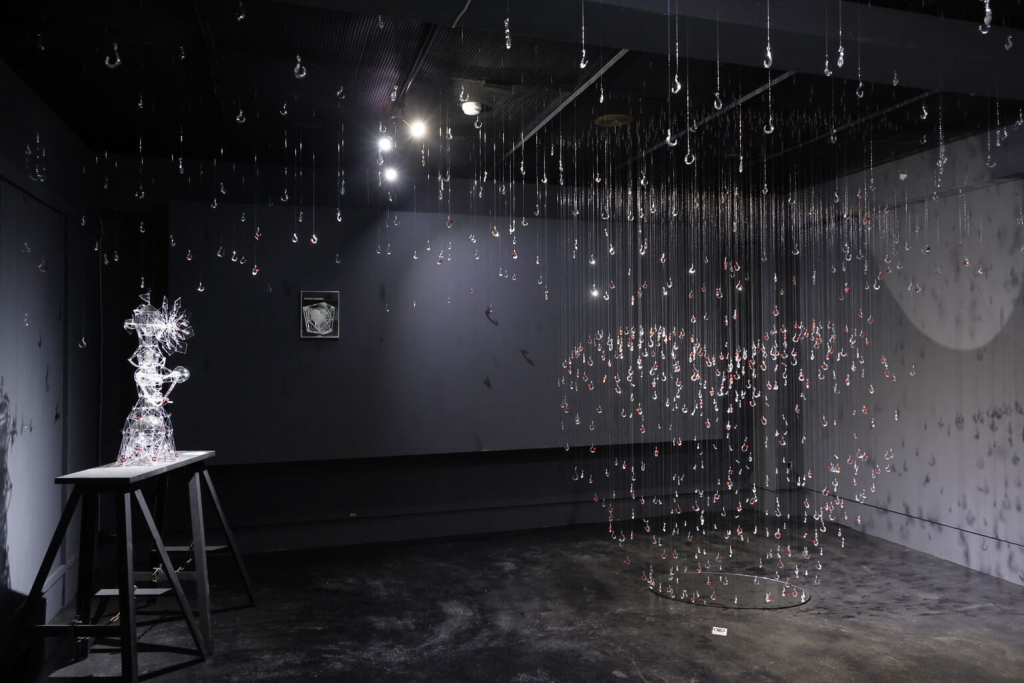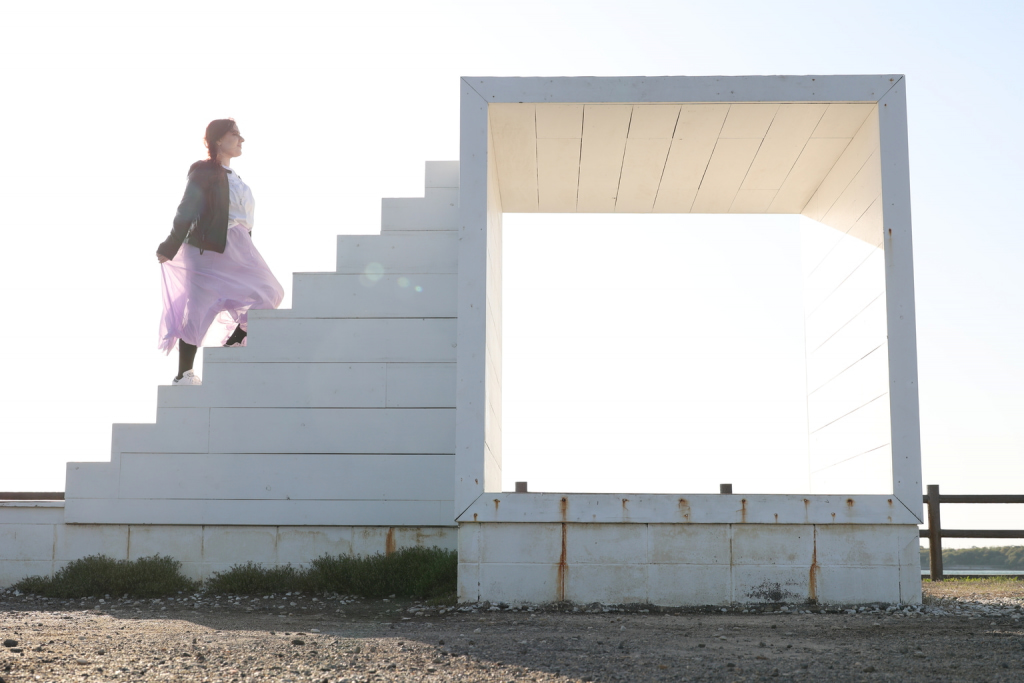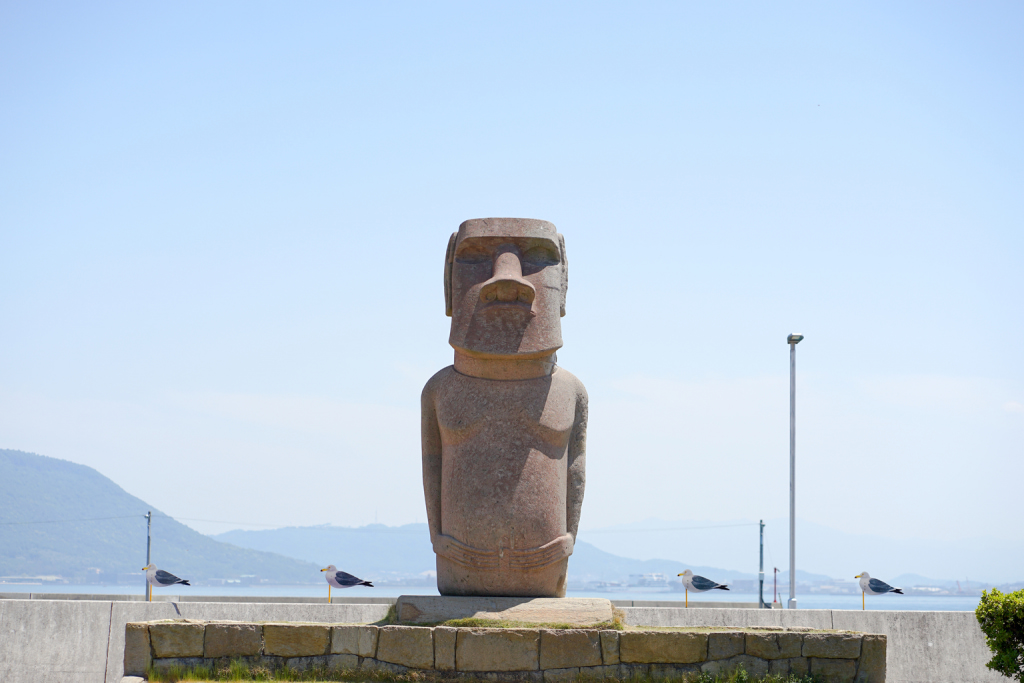As the aging Japanese population slowly declines, islands that once served as ports of defense or trade become overlooked, depopulated and unloved. Across a variety of regions, there is a commendable movement to repopulate these places, using art. These art islands are designed to attract the younger crowd and those who have an interest in all things creative, to inject some life back into the criminally underrated isles.
From mysterious ogre islands to old schools transformed into contemporary art galleries, there is much for art lovers who have graduated from Naoshima to discover. Here are just some of those art islands, where the artists have created works together with residents and made the most of natural resources around them.

Momoshima, Installation in Goemon House by Chu Enoki
Momoshima: Abandoned Buildings Become Art Venues
Momoshima has been referred to as the hidden gem of Japan’s art islands. The island’s population has decreased by over 80% since WWII and many of its buildings have been left to nature’s devices. Recently though, many of these buildings, once forgotten and derelict, have been given a new lease on life.

Wandering Mickey, Yukinori Yanagi
Highlights include Art Base, an old school building turned into a gallery and artist residency. The school gymnasium hosts “Red, White and Blue – Wandering Mickey,” a permanent installation by Yukinori Yanagi, consisting of 500 colorful oil drums lining the walls. Originally part of Yanagi’s art thesis project at Yale, the oil drums, together with the centerpiece — a car running in a giant hamster wheel — represent the mass-consumption culture of the United States. Other permanent exhibits include works by Noriyuki Haraguchi and Kana Yoshida. Elsewhere, a restored theater from the 60s, Nisshokan features installations and the odd movie showing, while Otsu1731-Goemon House, an old Showa-era home, has been repurposed into an art gallery and guest house.
Note: Visitors must call in advance before planning a trip here.

Megijima
Megijima: Art in Traditional Settings
Like Iki Island, Megijima also has cause for the nickname “Ogre Island.” This tiny 4-kilometer-wide island is just a 20-minute ferry ride from Kagawa Prefecture’s Takamatsu Port. While you’ll find some fantastic beaches, it is the so-called “demon caves” taken from Japanese folklore featuring hero Momotaro and the various demon homages across the island that supply Megijima with character.
Aside from the demon caves, the island serves as one of the Setouchi Triennale venues. It also features Megi House, which is owned by Aichi Art University and often holds student-run exhibitions and concerts. Artworks on display around the island include seagulls lining the seafront, bonsai art and a tiny theater.

Sakushima (c) Yukiya Kato
Sakushima: Intersecting Installations
Sakushima is a small island located in Mikawa Bay, off the coast of Aichi Prefecture. Visitors will not tire of strolling around to check out the attractions the island offers – in addition to the abundant artworks are 88 shrines.
Budding photographers will appreciate photogenic artworks such as the pristine white “floating” steps that lead to nothing but the sky. Ohirune House uses a similar concept of borrowing the ocean view to highlight the beauty of blank space.
The “North Ribbons” installation acts as an intersection between forest and sea, which guests can visit before swimming in the sea at Sakushima’s popular Oura Beach.

Awashima, Missing Post Office
Awashima: Whales and Postage
Awashima in Mitoyo City has a longstanding relationship with visiting artists, and a rare case of receptive island residents. Among a variety of artworks, the island also boasts torii gates overlooking the sea.
Visitors to Awashima delight in the “Missing Post Office” installation by Saya Kubota, who turned the island’s old postal headquarters into a poetic artwork for all to enjoy. Staffed by a postmaster, this office provides a destination for letters without recipients — it offers a permanent home for the homeless. To participate in the project, letter writers should check the official website for further details.
Elsewhere on the island are six giant whale sculptures from Maki Ohkojima’s previous residency in the Awashima Artists’ Village and Indian murals, untouched by residents as reminders of a previous Setouchi Triennale. The Awashima Artists’ Village often features exciting new exhibits, including a web of blue netting constructed by design students at Zentsuji Daiichi High School. Other artworks have been created by residents themselves, such as Buoy Buoy Garden, where hundreds of hand-painted buoys are gathered on display. Note that the garden lies on private property, so be mindful when taking photos. You’ll also find charming buoy figures scattered across the island.
View this post on Instagram
Omishima: Jewel of Ehime
In Shikoku’s land of oranges lies an unexpected highlight: the island of Omishima, where architecture meets nature and nature meets art.
Architect Toyo Ito has played a part in attempting to repopulate the island by creating a “Home for All” where the remaining residents — many of them elderly — can gather. He has even been integral in starting up wine production on Omishima. The winery is on track to produce 10,000 bottles a year.
Aside from these community projects, Omishima is home to a host of artworks across the island that play with shape and form. The Toyo Ito Museum for Architecture — Japan’s first museum to be dedicated to one architect — as well as the Tokoro Museum, the Ken Iwata Mother and Child Museum and the Omishima Museum of Art all add to the cultural weight of this fascinating island.









